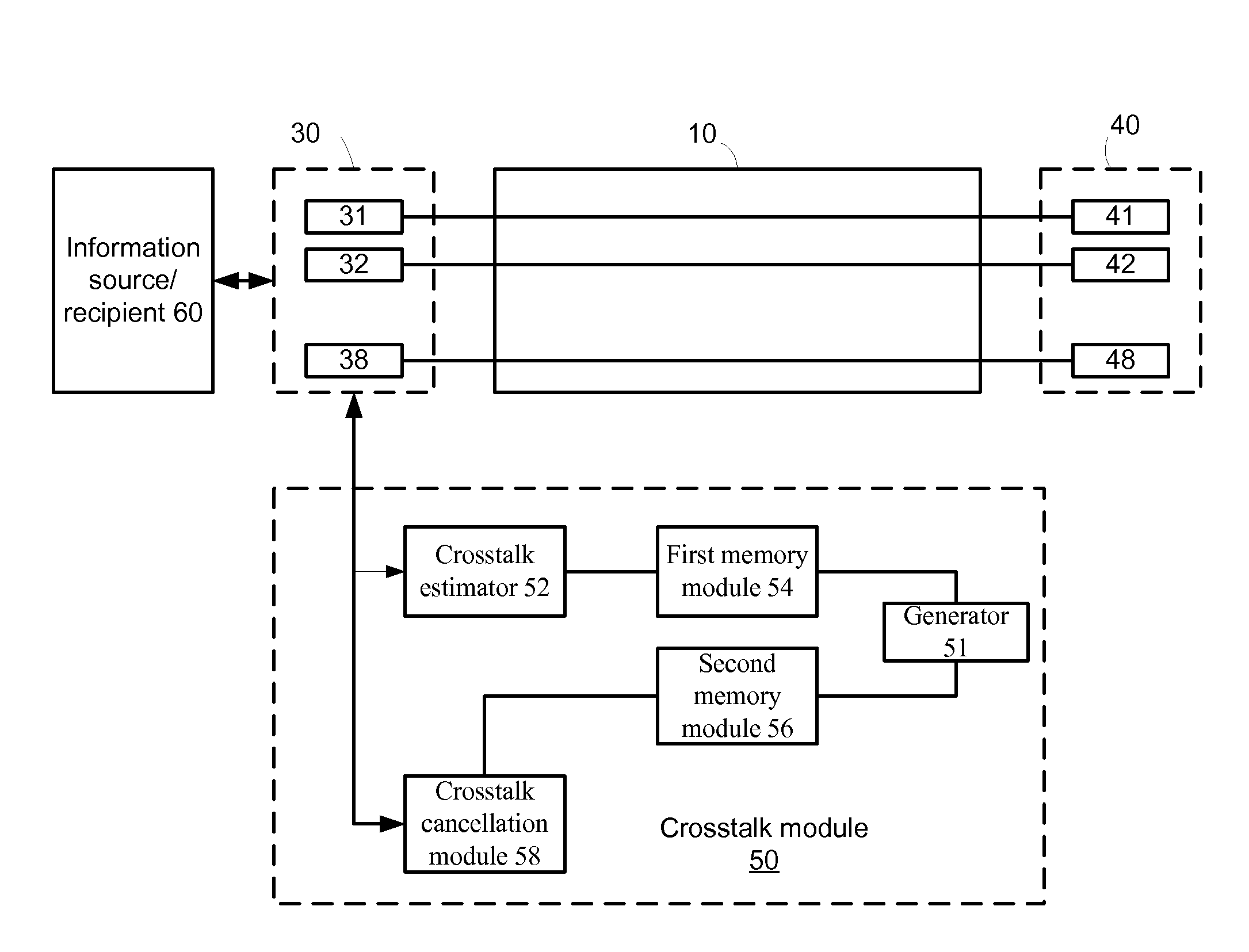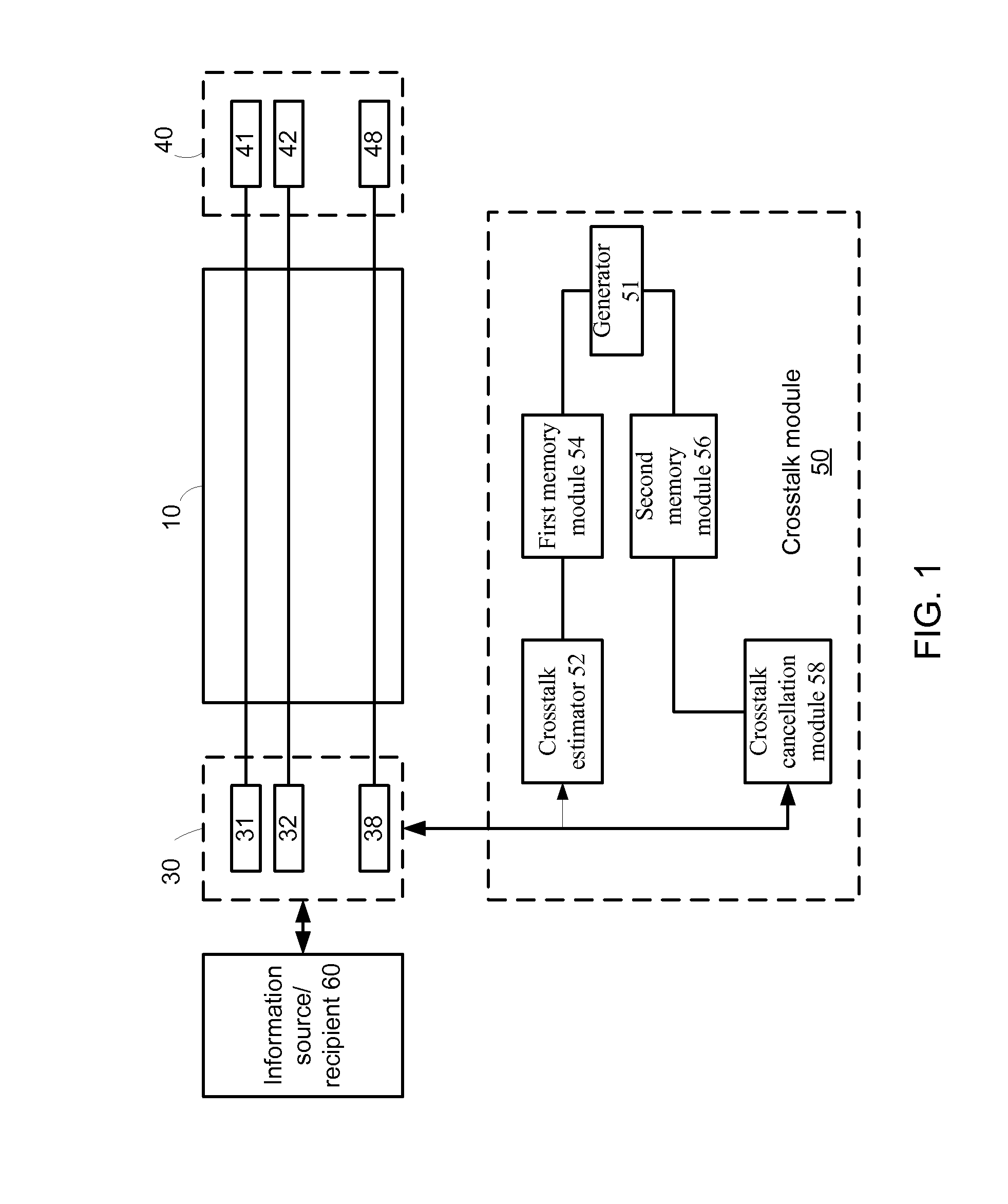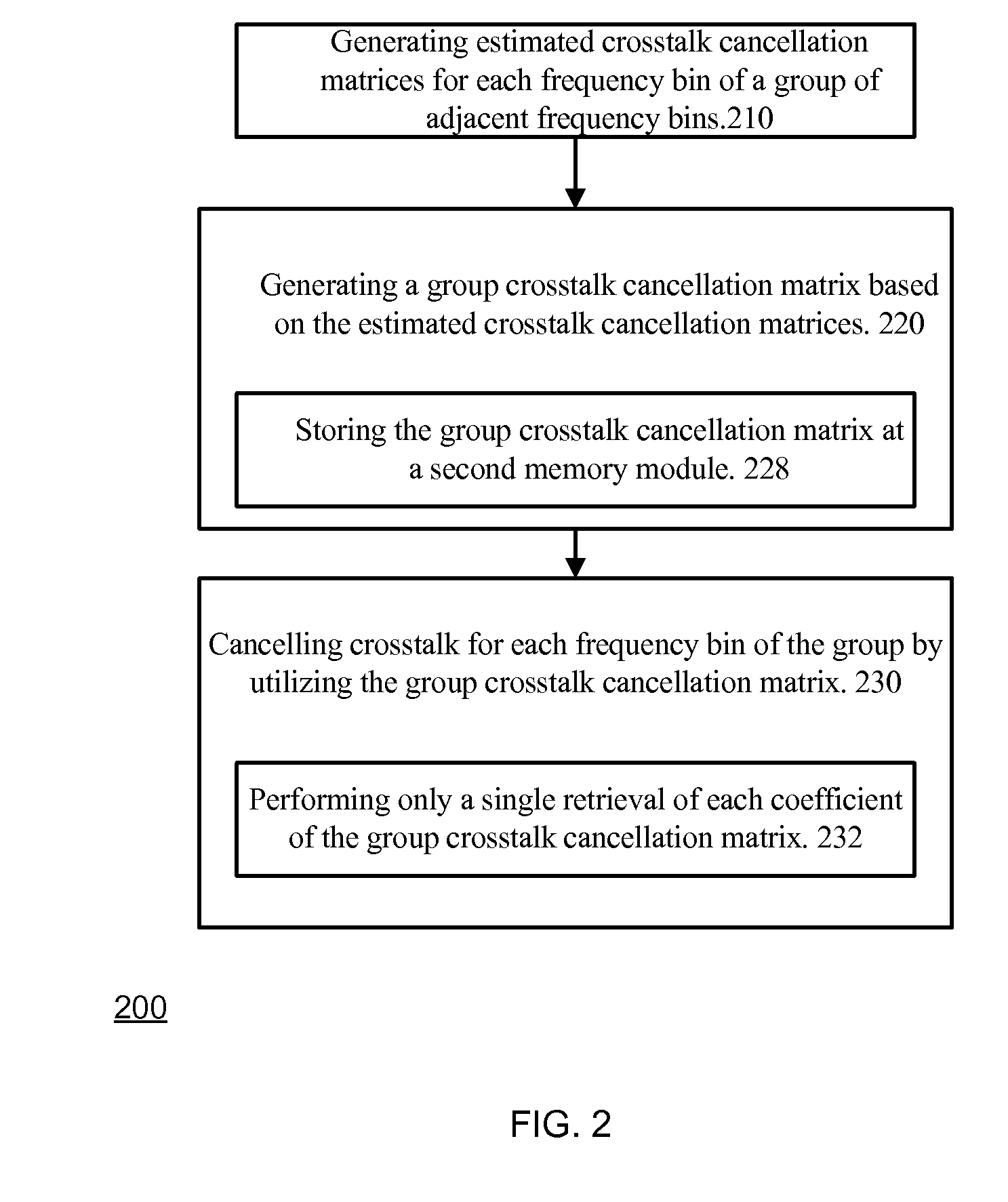System and method for digital subscriber loop crosstalk cancellation
a technology of digital subscriber loop and crosstalk, applied in the field of system and method for digital subscriber loop crosstalk cancellation, can solve the problems of significant spectral interference between dsl services deployed on different twisted copper pairs in the same cable, and inability to provide high data speeds to customers located more than a few kilometers from the central office. to achieve the effect of reducing crosstalk
- Summary
- Abstract
- Description
- Claims
- Application Information
AI Technical Summary
Benefits of technology
Problems solved by technology
Method used
Image
Examples
first embodiment
[0068]FIG. 2 illustrates method 200 for crosstalk cancellation, according to an embodiment of the invention.
[0069]Method 200 starts by stage 210 of generating estimated crosstalk cancellation matrices for each frequency bin of a group of adjacent frequency bins.
[0070]Each estimated crosstalk cancellation matrix provides an estimation of a crosstalk cancellation that is expected to mitigate crosstalk that is generated at a single frequency bin by an array of transmitters that transmit information over different copper pairs that form a bonded digital subscriber line link.
[0071]A k′th estimated crosstalk cancellation matrix can provide an estimation of the crosstalk generated at the k′th frequency bin.
[0072]Stage 210 is followed by stage 220 of generating a group crosstalk cancellation matrix based on the estimated crosstalk cancellation matrices.
[0073]The size of the group crosstalk cancellation matrix is smaller that an aggregate size of the estimated crosstalk cancellation matrices...
second embodiment
[0098]According to the second embodiment only one set of coefficients is used for the estimation and for the pre-coding / decoding operations. A reduced set of coefficients is estimated and stored for each group of bins.
[0099]The estimation of the pre-coding / decoding coefficients is performed only for one bin in each group of n bins, and the resulting coefficients are used for the pre-coding / decoding operations on all the bins in the group.
[0100]Therefore, only one memory module may be used for both estimation and pre-coding / decoding. FIG. 4 illustrates a method 400 for crosstalk cancellation, according to an embodiment of the invention.
[0101]Method 400 starts by stage 410 of generating an estimated crosstalk cancellation matrix for a single frequency bin out of a group of adjacent frequency bins. The estimated crosstalk cancellation matrix provides an estimation of a crosstalk cancellation that is expected to mitigate crosstalk that is generated at the single frequency bin by an arra...
third embodiment
[0119]In this embodiment only one set of coefficients is used for the estimation and for the pre-coding / decoding operations itself. As in the previous embodiment, only one reduced set of coefficients is estimated and stored for each group of bins.
[0120]Estimation and adaptation of the pre-coding / decoding coefficients is performed only for one bin in each group of n bins.
[0121]The resulting coefficients are then used for pre-coding / decoding of that one bin in each group, while for the other bins in the group the coefficients are computed in real time using interpolation between the computed coefficients of their group and neighboring groups of bins.
[0122]FIG. 6 illustrates method 600 for crosstalk cancellation, according to an embodiment of the invention.
[0123]Method 600 starts by stage 610 of generating a first estimated crosstalk cancellation matrix for a first frequency bin of a first group of adjacent frequency bins. The first estimated crosstalk cancellation matrix provides an e...
PUM
 Login to View More
Login to View More Abstract
Description
Claims
Application Information
 Login to View More
Login to View More - R&D
- Intellectual Property
- Life Sciences
- Materials
- Tech Scout
- Unparalleled Data Quality
- Higher Quality Content
- 60% Fewer Hallucinations
Browse by: Latest US Patents, China's latest patents, Technical Efficacy Thesaurus, Application Domain, Technology Topic, Popular Technical Reports.
© 2025 PatSnap. All rights reserved.Legal|Privacy policy|Modern Slavery Act Transparency Statement|Sitemap|About US| Contact US: help@patsnap.com



